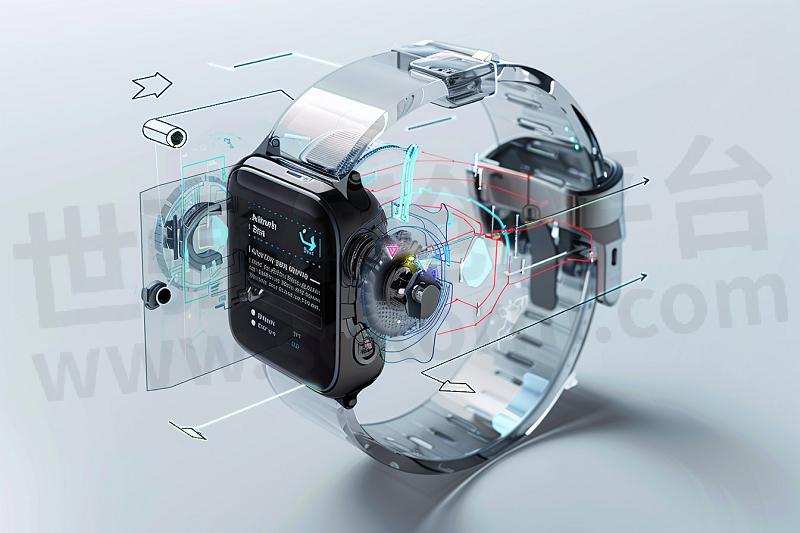The Art and Science of Haptics Integration

Integrating haptics into product design is a complex process that often requires a careful balance of science, art, and engineering. There are many key factors to consider when integrating haptics into your product, including understanding the user experience, the technical feasibility, the cost implications, and the overall impact on the product’s design and functionality. So, what makes haptics integration challenging?

1. Design Complexity
Haptics is not a one-size-fits-all solution. The design process involves numerous variables, from choosing the right motor to designing the product to accommodate the haptic system.
Consider a high-end smartwatch company looking to integrate haptic technology into their next design. The product design team must consider selecting the right motor—small enough to fit the sleek design of a smartwatch but powerful enough to create a noticeable vibration. They must also figure out how to incorporate this motor into the existing design without sacrificing aesthetics or functionality. This might involve reconfiguring the internal layout of the watch components or even redesigning the watch case to accommodate the new system.
The team must also internal volume constraints. The smartwatch already houses numerous components such as a battery, a processor, a display, and more. Adding a haptic system increases the risk of overcrowding, which could lead to overheating or other technical issues.
2. Creating the Right Effects
Haptics is more than just vibrations. Crafting the perfect haptic effect is an art that requires a deep understanding of the technology and how it interacts with human touch. This includes ensuring precise haptic feedback and implementing vibration isolation to ensure the haptic feedback is limited to where the designer wants it to be.
A team that wants to implement haptics into a touchscreen device, for example, must be able to design haptic effects that align with the user experience. Buzzes, pulses, ticks, and rumbles should correspond to a digital event and should be intuitive, precise, and non-intrusive to ensure they do not disrupt or distract the user. Moreover, it’s crucial to ensure that the haptics is confined only to the intended areas. If the device vibrates or gives tactile feedback in areas not related to the user’s current interaction, it could be confusing or disruptive.
3. Power Consumption Considerations
Haptic systems, by their very nature, consume power. The more intense or frequent the haptic feedback, the more power it consumes. This is an important consideration, especially for battery-operated gadgets like smartphones or wearable devices. For instance, if a device is designed to provide constant haptic feedback, the power drain could significantly reduce the device’s battery life. Therefore, it’s important to strike a balance between the desired haptic effect and power consumption.
Product design teams need to consider using advanced algorithms that optimize power usage or designing the haptic system to provide feedback only when necessary. Additionally, they must also consider the power management of the device. The haptic system needs to be able to integrate with the device’s existing power management system.
4. Durability
Durability is another key consideration in haptic integration. Most devices are subject to constant use and abuse, particularly in applications such as gaming controllers or automotive interfaces.
A gaming controller with integrated haptics is likely to be used for hours on end, subject to rapid button presses, and even dropped or thrown in the heat of the game. Similarly, an automotive interface with haptics, such as a car seat or gear shift, needs to withstand the rigors of daily driving and the varying environmental conditions within a vehicle.
Therefore, the haptic system must be robust enough to withstand frequent, intense use over a long period of time. The electronics used to produce the haptic effects that produce the haptic effects need to be robust and reliable. They need to be able to deliver consistent performance, even after thousands, or even millions, of activations. Additionally, the haptic system should be designed to minimize wear and tear on other components. The vibration of the haptic system should not cause undue stress on the device’s other electronic components or sensitive mechanical features.
5. Potential Interference
There are also electromagnetic considerations when integrating haptics into a device. Haptic systems generate electromagnetic frequencies that could potentially interfere with other sensors in the device. This could lead to inaccurate sensor readings or even device malfunction, which could be disastrous in critical applications.
For example, a smartphone with integrated haptics might also have a compass, GPS, or other sensors that could be affected by the haptic system’s electromagnetic frequencies. The design team must ensure that the haptic system is shielded or isolated in a way that minimizes or eliminates potential interference.
Similarly, in wellness applications, it’s crucial to ensure that the haptic system in wearable devices does not interfere with life-saving medical devices such as pacemakers and insulin pumps. This may require additional testing and certification to ensure the safety and efficacy of the haptic system in these applications.
Overall, haptic integration into a product presents several challenges. It requires a delicate balance of hardware design, software programming, and power management. In the right hands however, these cease to be challenges and become part of an exciting journey towards innovation.
Here are a few ways companies can navigate the challenges of integrating haptics:
Research and Development
Investing in haptic R&D can help companies stay at the forefront of haptics technology and ensure they are leveraging the latest advancements.
Setting aside time to look into haptic research ensures that companies understand the human touch and how it interacts with and responds to different haptic effects. Similarly, investing in developing prototypes and testing allows companies to experiment with different materials and designs to enhance durability and minimize interference, and explore new methods of power management to optimize energy consumption. Companies can also conduct extensive testing and iteration on their prototypes, allowing for adjustments in component positioning and direction, and fine-tuning of haptic feedback. By doing so, companies can ensure that they deliver the best version of their product.
User Experience
Ultimately, the goal of haptics is to enhance the user experience, and not to complicate it. Prioritizing UX in the design process ensures that the haptic feedback adds value to the product and resonates with users.
Product designers must consider the product’s use case and design haptic effects that are intuitive and align with the user’s expectations. They must also consider how the haptic system will impact the overall design and functionality of the product. Will it make the product bulkier? Will it reduce battery life? These are all key considerations that can impact the user experience.
Partner with Experts
Engaging with a haptics technology specialist can be a strategic move for companies that may not have the haptics expertise in-house. The process of integrating haptics involves a variety of steps, including choosing the appropriate motor, haptic integration, selecting the drive electronics, and developing the desired haptic effects. Specialists in this field can provide advice on managing power, ensuring durability, and mitigating interference issues. They can also offer assistance in reconfiguring product designs to include the haptic system.
If you’re interested in working with TITAN on your haptic-enabled products, get in touch with TITAN.
- +1 Like
- Add to Favorites
Recommend
- University Haptic Labs Leading the Way in Haptic Research
- Why Haptics? Unveiling the Benefits and Applications of Haptic Technology
- Understanding Haptics: A Journey through the History and Evolution of Haptic Technology
- Haptics in XR, Apple’s Hand Tracking and DIY Haptics Peripherals
- Top Haptics Products that Launched in 2023
- Steering the Future: The Role of Haptics in Automobiles
- Haptic Motors Clustered Haptic Arrays by TITAN Haptics Clusters Unlock New Possibilities
- What is Haptics? Perspectives from Top Sources
This document is provided by Sekorm Platform for VIP exclusive service. The copyright is owned by Sekorm. Without authorization, any medias, websites or individual are not allowed to reprint. When authorizing the reprint, the link of www.sekorm.com must be indicated.


















































































































































































































































































































































































































































































































































































































































































































































































































































































































































